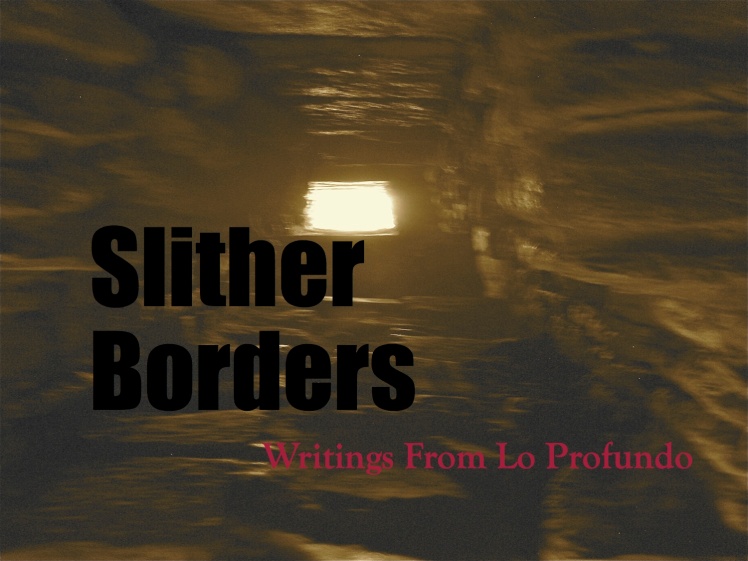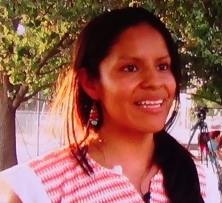This excerpt uses the work of feminist theorists (Anzaldúa 2011 & 2007, hooks 1991, Lorde 2007, Watson-Gegeo 2005), to examine how writing has become a “shamanistic” (Anzaldúa, 2009: 121); a transformative healing act for young mujeres Oaxaqueñas, it illustrates this by their personal quotes and poetry. This piece has been edited, from its original chapter format titled Young Mujer Oaxaqueña-A Self Reclamation from Rosalba’s masters thesis Deep Culture: With Wings On the Roots (2014).
______________________________________________
“Being from Oaxaca is Beautiful”
—Juanita
To transform, and turn upside down the realities that shape our world is possible. We must grab and shape our own imagination. We must find our own voice. We must learn how to speak differently, and speak with endearment.
To speak with genuineness, is “seeing through the membrane of the past superimposed on the present, in looking at our shadows and dealing with them” (Anzaldúa, 2009:138).
In Audre Lorde’s (2007) essay The Transformation of Silence into Language and Action she declares that transformation emerges from the place we’re most vulnerable,
And I began to recognize a source of power within myself that comes from the knowledge that while it is most desirable not to be afraid, learning to put fear into a perspective gave me strength. (40)
And so we must begin from lo profoundo. Lo profundo lies deep in the heart and it is a form of knowing. I became conciente (conscious) of the importance of lo profundo during a decolonizing workshop, attended by predominately Oaxaqueñas/os[1] in Fresno, where one activity led us to discuss our understanding of words, such as Indio/a. In a large group, the facilitator asked why we chose to not identify with being Indio/a. In a heartfelt voice a Oaxaqueña woman, stated “Tiene implicaciones profundas que llegan hasta el corazón”[2] (“It [India/os] has profound implications that reach deep in the heart) (Anonymous, Personal Communication, Feb 7, 2012). Her words touched me, as they came from the place that bleeds, and that we hide. The place that we have not allowed to be transformed into a scar. In lo profoundo, we have been “trapped”. In lo profundo our strength lies. Lo profundo is an education of our heart. And so we must speak, write and act from lo profundo.
“Tiene implicaciones profundas
que llegan hasta el corazón”
Teaching from lo profundo is not easy. It is a process that pushes the borders, in which we reveal ourselves and unveil our “Nakedness,” as Anzaldúa (2009) put it (33). We show our scars, our imperfections, hablamos de lo que no se habla (we speak of the unspoken), and by doing so we are engaging in an act of transformation. We are practicing what Anzaldúa (2009) refers to as the shaman aesthetics, which is using writing and images to replace metaphors that are self-defeating with metaphors que nos sanan (heal us) and liberate us (121). Enacting, in the act of writing has this possibility to not only transform us, but also its audience. In the words of Anzaldúa (2007)
The ability of story (prose and poetry) to transform the storyteller and the listener into something or someone is shamanistic. The writer, as shape-changer, is a nahual, a shaman. (88)
A shaman uses his hands para curarar (to heal). At first it eases in slowly. It touches the untouched. It caresses donde duele (the source of pain). It allows the pain to reveal itself. It offers the profundo to speak. As it listens carefully, it searches for the words to name what has remained silent. In painful and bold acts the shaman begins to put the words on paper.
***
… drawing the “skeleton” of the past
and at the same time
laying the foundation for our futures.
The paper offers power. For us young mujeres Oaxaqueñas it offers an alternate order. Pen in hand. It means, drawing the “skeleton” of the past and at the same time laying the foundation for our futures. So I ask Grisanti why she writes.
[R] Why do you write poetry?
[G] Just talking to people, yeah, you can make that connection, but when you have it in writing, when you have it in a poem. Because it [referring to the poem] has so much emotion in there. And since […] each poet reads their poetry in a certain way where it causes this emotion for other people to connect to. You know? I think that is why I choose to do it, in marches, rallies […]
[R] What can emotion do to people?
[G] It can move people.
(Grisanti, Personal Communication, August 2013)
In a stroke of a pen, the writer transforms the silence into words. Pen in hand. We write our truths. Make a self-reclamation. An inner-outer transformation unravels. We transform. We transform you.
***
NO LONGER UNDERGROUND. We cringe at the idea of remaining underground, complacent and SILENT.
We replace the silence. We push the borders. CRUZAMOS La FRONTERA
Us being together […] is a big protest to what basically society has being teaching us all of our lives: We’re not worth the time of day. “You are not really a person: you are “Indio”. […] ‘You are below’. So us protesting that […]. Protesting what is beauty. Protesting […] our identities. […]
—Juanita
[1] Oaxaqueños (Spanish), people with origins in the state of Oaxaca in the Mexican Republic
[2] Workshop was titled Decolonization hosted by Autonomos a group of Oaxaqueño youth in Fresno, California and facilitated by Dr. Gaspar Rivera a researcher/professor from UCLA
This Other Southerner:
Rosalba is a South Bronx based artist raised in the agricultural fields of Madera, California. She is a trained ethnographer, self taught artist, educator and community organizer who integrates indigenous epistemology and her own experience as “borderland woman” as part of her methodology to write.
© Copyright Rosalba Lopez Ramirez 2015

